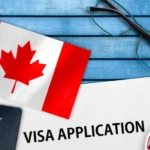
Canada Introduces AI-Based Screening for Travellers at Border Crossings
Canada has launched a new artificial intelligence (AI) system to screen travellers entering the country, introducing a major change in border security operations. The Canada Border Services Agency (CBSA) is piloting the Travel Compliance Indicator (TCI), a predictive analytics tool that assigns each traveller a “compliance score” to help officers assess whether further inspection is needed.
This new system aims to enhance security while speeding up processing at land ports of entry (POEs), but it also raises questions about privacy, accuracy, and the role of AI in decision-making.
Key Highlights of the AI Screening Initiative
- New AI Tool: Travel Compliance Indicator (TCI)
- Developed by the CBSA to assist border officers in screening travellers entering Canada.
- Uses predictive modelling and historical CBSA data from the last five years to generate a compliance score.
- Current Implementation
- The TCI is currently operational at six undisclosed land ports of entry across Canada.
- Full deployment across all land POEs is planned by late 2027, with air and sea ports to follow.
- Purpose and Benefits
- Designed to improve processing times and reduce unnecessary secondary inspections caused by “false positives”.
- Helps border officers quickly identify compliant travellers, reducing delays and congestion at border checkpoints.
- Supports CBSA’s modernization efforts without the need to hire large numbers of new officers.
How the AI System Works
The TCI evaluates travellers using real-time data and predictive analytics to determine a likelihood of compliance with Canada’s Customs Act and other entry regulations. It draws information from multiple CBSA databases to assign a compliance score based on:
- Travel history recorded in CBSA databases.
- Mode of transport (vehicle, plane, or ship).
- Travel companions (solo or accompanied).
- Type of identification presented at entry.
- Vehicle details, such as license plate information.
This compliance score does not directly determine entry, but it flags individuals whose patterns match higher-risk profiles. CBSA officers use this flag to decide whether a traveller requires secondary inspection.
CBSA’s Position and Safeguards
- Officer Discretion Maintained
- The CBSA emphasizes that final decisions will always rest with human officers.
- The AI tool serves only as a decision-support system, not as an autonomous authority.
- Privacy and Accuracy Concerns
- The agency acknowledges potential risks if officers rely on inaccurate recommendations (false flags).
- Incorrect flags could lead to unnecessary delays and long-term implications for travellers.
- Financial Investment
- Development costs exceeded $15 million, with annual maintenance estimated at $700,000.
- The tool is expected to improve operational efficiency at a lower cost than hiring additional staff.
Potential Impact on Travellers and Newcomers
- Travellers may experience faster processing times and fewer random secondary inspections if flagged as compliant.
- Individuals with complex travel histories or inconsistent documentation could face additional scrutiny.
- Permanent residents, work permit holders, and new immigrants should ensure all travel documents are accurate and updated to avoid unnecessary delays.
Table: Key Details of Canada’s AI Border Screening
| Feature | Details |
|---|---|
| Technology | Travel Compliance Indicator (TCI) |
| Developer | Canada Border Services Agency (CBSA) |
| Current Deployment | 6 undisclosed land ports of entry |
| Full Rollout | All land POEs by late 2027; air and sea ports to follow |
| Data Sources | CBSA traveller records, transport details, identification data |
| Purpose | Improve efficiency, reduce false positives, enhance security |
| Cost of Development | Over $15 million |
| Annual Maintenance Cost | Approximately $700,000 |
| Decision Authority | CBSA officers retain final decision-making power |
For a consultation about Immigration options, reach out to the CAD IMMIGRATION today!





